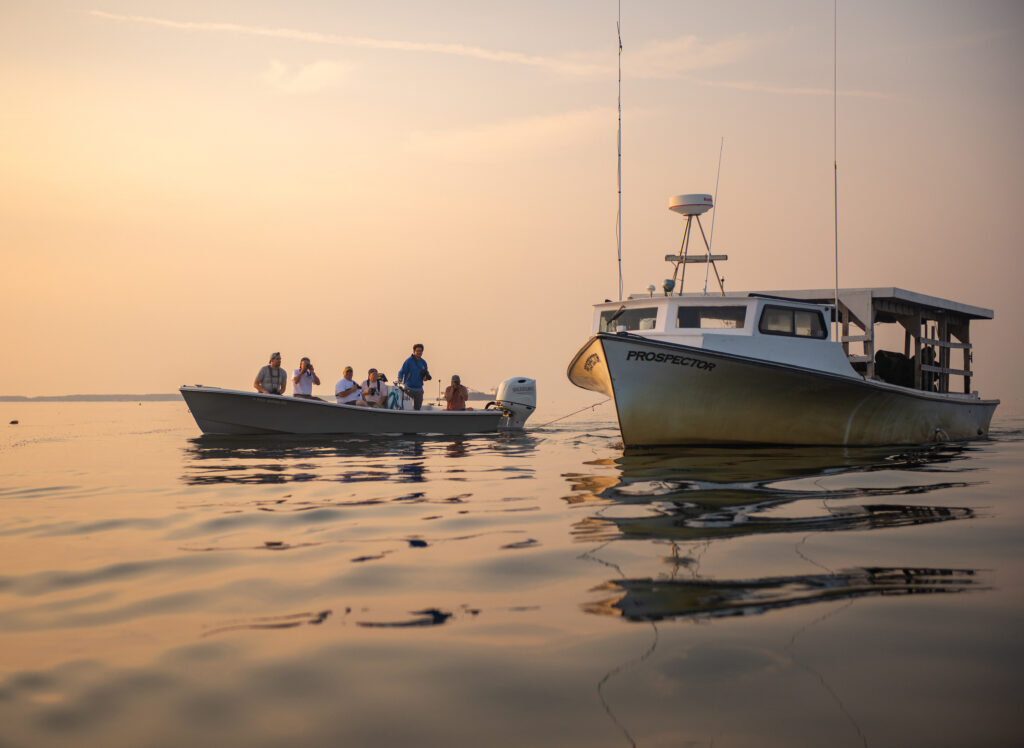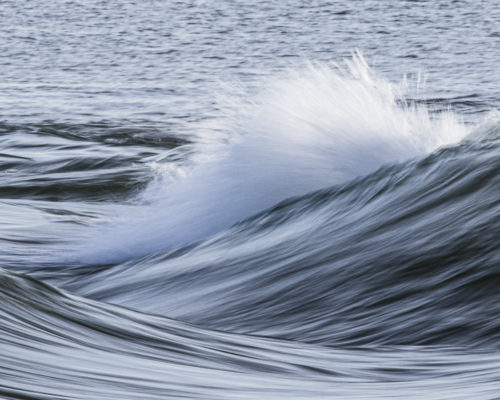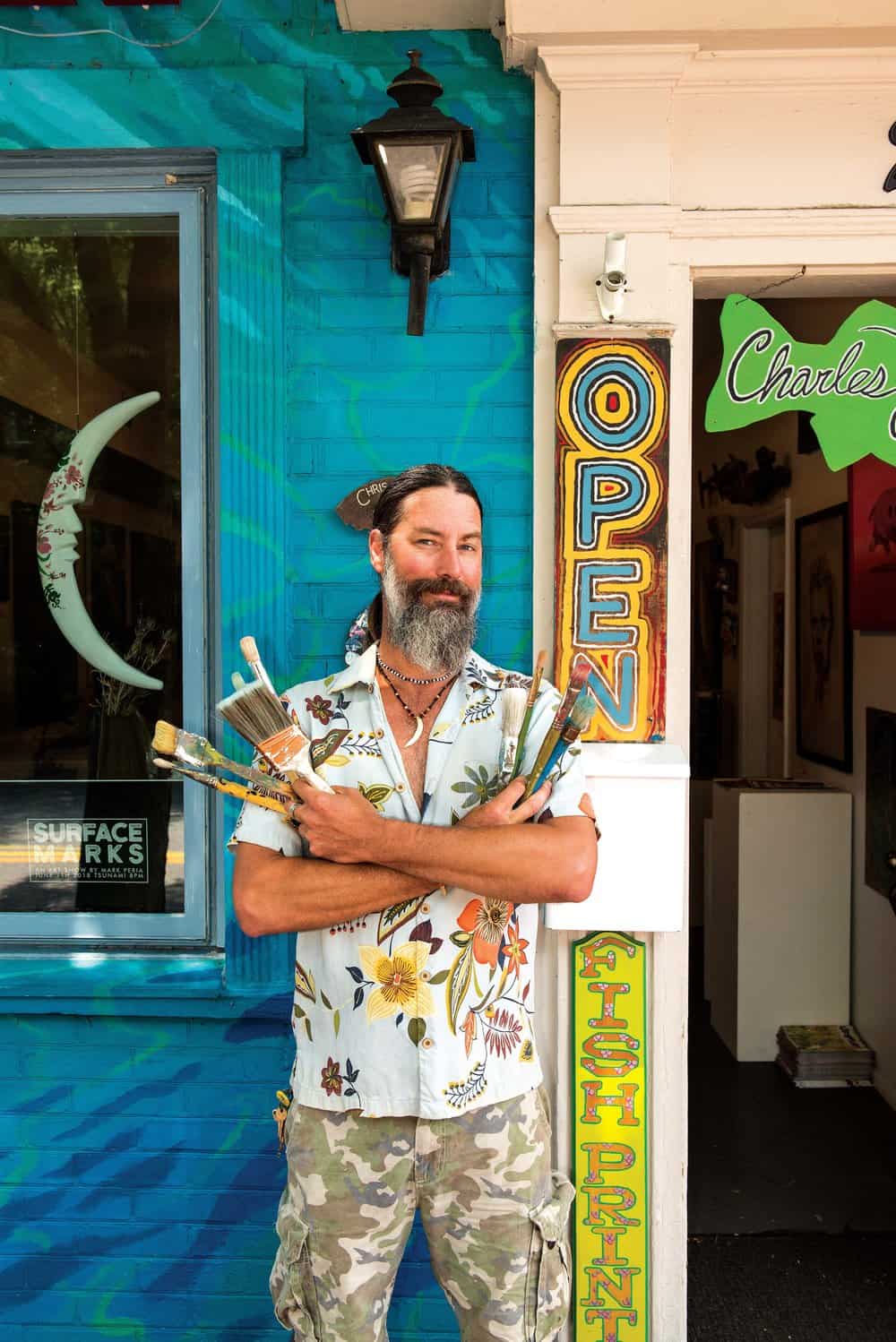Every year, millions of people enjoy seafood from the Chesapeake Bay, where the blue crab, striped bass, and oyster fisheries collectively contribute over $100 million to the local economy. But how many people know the faces behind their seafood? Photographer Jay Fleming has helped educate these seafood consumers through his immersive on-the-water photography workshops. He brings his pupils to some of the most remote Bay communities for rare access to the watermen’s way of life.
Fleming has been taking pictures since he was 13 years old, when he discovered one of his father’s old 35mm film cameras. When he grew up, Fleming spent the first part of his career working for the state of Maryland in seafood marketing. His job was to help bridge the gap between harvesters and consumers.
After leaving his state job in 2015 to work as a freelance photographer, Fleming has been “working the water” with his camera, revealing a behind-the-scenes look at the people, products, and processes of the seafood industry. “Being able to connect with the watermen community has been one of the most rewarding parts of my job,” says Fleming. To share this experience with like-minded photographers, Fleming started offering photography workshops on Smith Island. The isolated island was an ideal location for photographers with abundant wildlife and a fleet of working watermen. His workshops have since evolved to cover multiple locations. He now has his U.S. Coast Guard captain’s license and a boat custom fitted to navigate the shallow waters of the Eastern Shore.
2024 marked a record year for Fleming’s workshops. This season, he hosted more than 150 photographers and introduced them to the working side of the Chesapeake that few get to experience. With workshops out of Cove Point Lighthouse, Hoopers Island, Smith Island, Tangier Island, Annapolis, and Deal Island, Fleming was able to find his students different subjects to photograph. “Each location offers a unique glimpse into Chesapeake culture, landscapes, and different fisheries. These workshops provide exclusive access to watermen and a behind the scenes look at the seafood we all know,” he says.
From finding the bay’s most remote bird nesting sites to photographing the making of a Smith Island cake, photographer Kim Kelly has covered it with Fleming. She has attended one of Fleming’s workshops in every location. “To best capture the waterman’s way of life, you have to experience it firsthand,” she says.
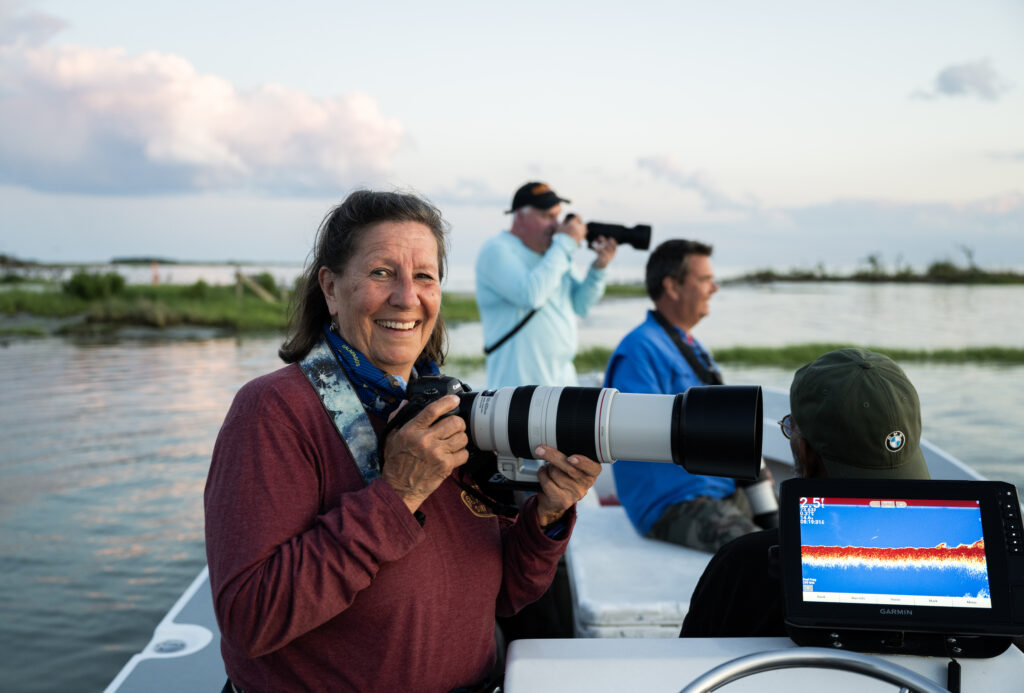
Fleming’s personal connections with the working men and women of the Chesapeake give his students the access needed to get the shot. His trips allow budding photographers to expand their skills and portfolio, but the real value of the “Jay Fleming Experience” is the social and environmental education he provides. His students learn firsthand about the environmental challenges posed to the Chesapeake and how locals have adapted to deal with them. “Jay has opened my eyes to a changing way of life through his workshops. I have a newfound appreciation for the seafood industry and the hard work that goes into bringing it to our tables from being on the water with Jay,” Kelly says.
The trips also focus on technical photography skills, tailor-made for Bay subjects. Tips on how to frame your shots better, how to set up your camera, and post-process editing are all key elements. For his workshops out of Annapolis, students have the opportunity to print a photo from his large format Epson printer.
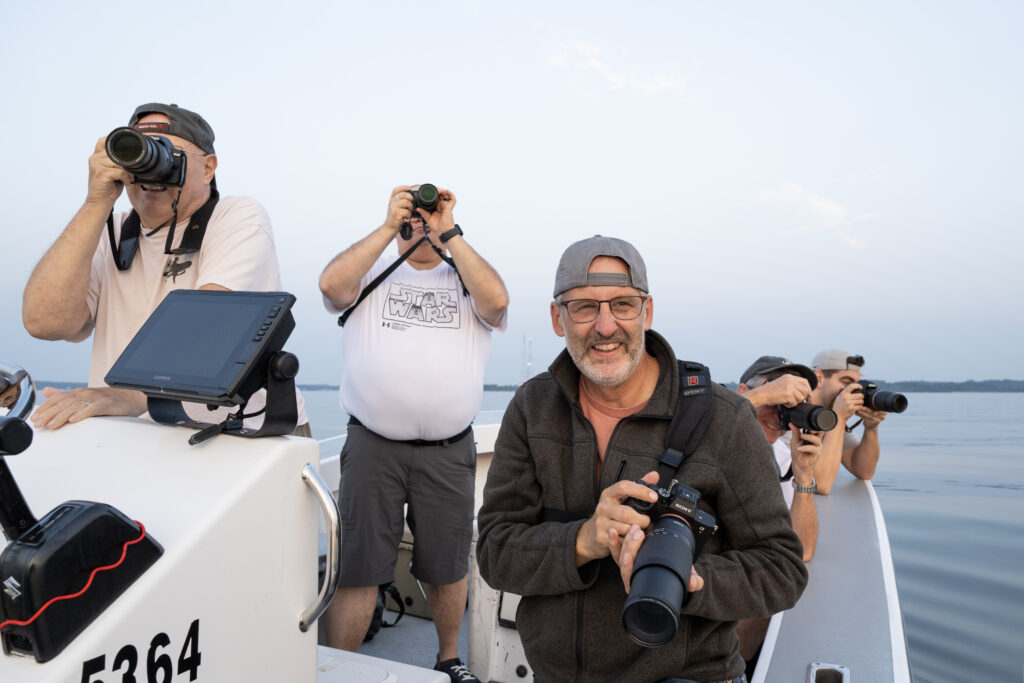
Fleming’s workshops aren’t just beneficial to photographers; they also positively impact the watermen and the seafood industry. Eddie Somers, a Smith Islander and head of the island’s advocacy group, Smith Island United explains, “Jay’s trips have brought hundreds of photographers to Smith Island. His trips showcase island life and our local seafood economy in a positive light. The experiences that he provides his students build an appreciation for our community. A handful of his attendees have even come back out on their own. This new form of photo-eco-tourism will be an important part of the island’s future economy.”
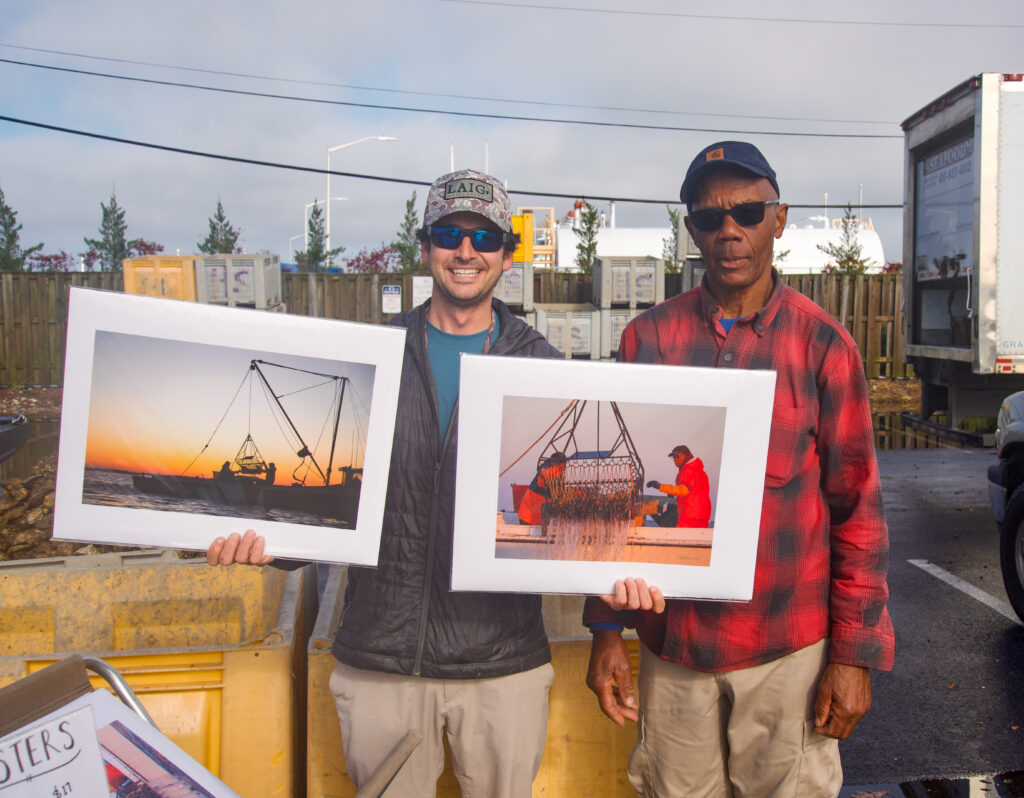
On any given morning the waterman greet Fleming with a smile. The men and women of Smith Island understand and appreciate Fleming’s motivation to educate his fellow photographers. Many of them are proudly displaying his prints in their homes. The islanders affectionately refer to Fleming as “Flanigan” and they can recognize his gray Privateer boat coming from miles away.
Through his workshops, Jay Fleming shines a light on the Chesapeake seafood industry, generating new interest and attention from a positive lens. His education not only in photography but also in environmental issues is a rare combination. While Jay Fleming may not work the water in a traditional sense, his work documenting his home waters plays a role in preserving the Chesapeake’s legacy and introducing new generations to its rich heritage.
TRY IT AT HOME
Jay’s tips for shooting from the water:
1. Get out when the conditions are right. I check the weather and try to pick the days with the lightest wind to get out on the water.
3. Go out early or late in the day to take advantage of the best light. The most colorful light is usually 30 minutes before and after sunrise/sunset.
4. Find interesting subjects – workboats, lighthouses and wildlife to name a few. The bay is a photographer’s playground!
5. When shooting from a boat, I like to get low to the water to capture the reflections of my subject on the surface of the water. By putting your camera low to the water you can make the reflections more dramatic in your photograph.
6. Know your camera’s settings, like ISO, aperture and shutter speed. Understanding these settings can be the difference between getting sharp, well exposed photographs and out of focus unusable photographs

